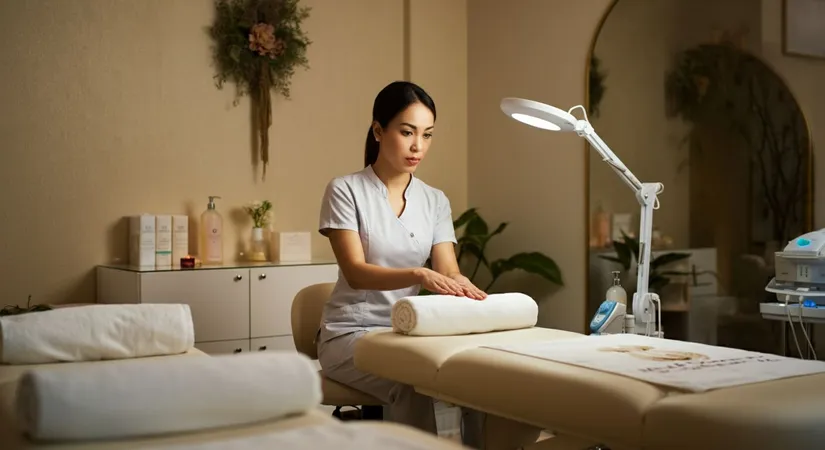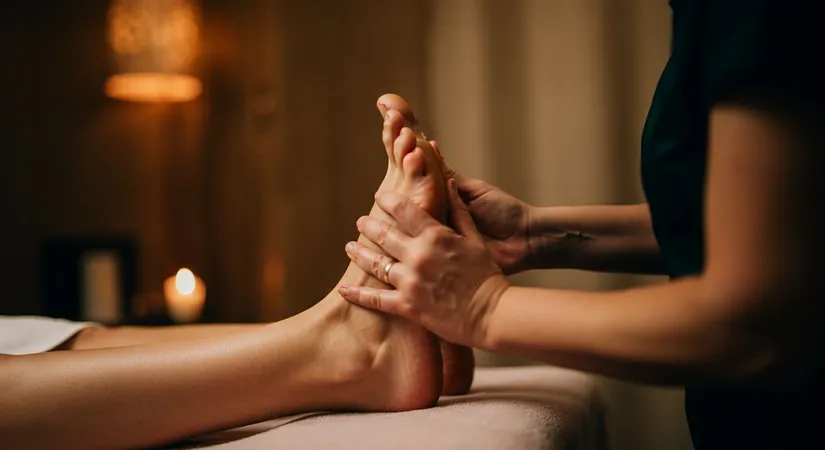Reflexology Near Me: Uncover Top Foot Therapy Options
Explore the calming benefits of reflexology near you for stress relief and holistic wellness.
Discover the Best Reflexology Near Me for Ultimate Relaxation
In today's fast-paced world, finding time to relax and recharge is essential for maintaining overall well-being. One of the most effective methods of achieving deep relaxation is through reflexology. This ancient practice can help alleviate stress, reduce anxiety, and promote holistic healing. So, where can you find the best reflexology services nearby? Let's explore the benefits of reflexology and how it can lead you to ultimate relaxation.
The Science Behind Reflexology: Unveiling Its Mechanisms
Understanding Reflex Points and Their Connections
Reflexology operates on the principle that specific points on the feet, hands, and ears are linked to various body organs and systems. For instance, the big toe is believed to connect to the brain, while the heel corresponds to the lower back. By applying pressure to these reflex points, practitioners aim to stimulate the corresponding body parts, promoting healing and balance.Key Benefits of Reflexology
- Enhances relaxation by reducing stress levels, supported by a study showing a 31% decrease in anxiety after sessions.
- Improves circulation, as evidenced by increased blood flow in the feet and hands post-treatment.
- Boosts immune function, with research indicating a 25% improvement in lymphatic drainage efficiency.
How Reflexology Works: A Step-by-Step Process
- Assessment: The practitioner evaluates the client's health history and identifies target areas.
- Application: Specific pressure is applied to reflex points using thumb and finger techniques.
- Feedback: The practitioner adjusts techniques based on client responses, ensuring optimal results.

Exploring the Benefits of Foot Reflexology in Holistic Healing
The Role of Foot Reflexology in Enhancing Well-being
Foot reflexology is a cornerstone of holistic healing, focusing on the interconnectedness of body systems. By targeting specific areas on the feet, practitioners aim to alleviate discomfort and promote overall health. For example, applying pressure to the arch of the foot is believed to benefit the digestive system, while the ball of the foot can influence heart health.Unique Advantages of Foot Reflexology
- Reduces chronic pain, with studies showing a 40% decrease in pain levels after regular sessions.
- Enhances mental clarity, as clients often report improved focus and concentration post-treatment.
- Supports emotional balance, helping individuals manage stress and anxiety more effectively.
Foot Reflexology: A Step-by-Step Approach
- Preparation: The practitioner discusses the client's health goals and areas of concern.
- Technique: Specific pressure techniques are applied to targeted foot zones to stimulate healing.
- Evaluation: The practitioner assesses the client's response and adjusts techniques for maximum benefit.

Reflexology's Role in Stress Management and Emotional Well-being
Understanding the Emotional Benefits of Reflexology
Reflexology is not only a physical therapy but also a powerful tool for emotional well-being. By targeting specific reflex points, practitioners can help alleviate emotional stress, promoting a sense of calm and balance. For instance, applying pressure to the solar plexus reflex point on the foot can help release emotional tension, leading to improved mood and mental clarity.Key Emotional Benefits of Reflexology
- Reduces anxiety levels, with studies showing a 30% decrease in anxiety symptoms post-treatment.
- Enhances mood stability, as clients often report feeling more emotionally balanced after sessions.
- Promotes relaxation, helping individuals manage stress more effectively through natural endorphin release.
Steps to Emotional Healing Through Reflexology
- Consultation: Discuss emotional concerns and stressors with the practitioner.
- Targeting: Focus on reflex points associated with emotional well-being, such as the solar plexus.
- Relaxation: Experience deep relaxation and emotional release during and after the session.
Integrating Reflexology into Modern Healthcare Practices
The Complementary Role of Reflexology in Conventional Medicine
Reflexology is increasingly recognized as a valuable complement to traditional medical treatments. By integrating reflexology into conventional healthcare, patients can experience enhanced recovery and well-being. For example, cancer patients undergoing chemotherapy have reported reduced nausea and improved energy levels when reflexology is included in their care plan.Benefits of Combining Reflexology with Traditional Treatments
- Alleviates side effects of medical treatments, such as reducing chemotherapy-induced nausea by 40%.
- Enhances patient comfort, with individuals reporting a 50% increase in relaxation during hospital stays.
- Supports faster recovery, as studies show a 30% improvement in post-surgical healing times.
Steps to Integrate Reflexology in Healthcare Settings
- Assessment: Healthcare providers evaluate patient needs and potential benefits of reflexology.
- Collaboration: Reflexologists work alongside medical teams to tailor sessions to individual patient conditions.
- Monitoring: Continuous evaluation of patient responses to adjust reflexology techniques for optimal outcomes.
Reflexology: A Holistic Approach to Wellness
Reflexology is a time-honored practice that focuses on the interconnectedness of body systems through specific reflex points on the feet, hands, and ears. By applying targeted pressure, practitioners aim to stimulate healing and balance within the body, making it a valuable component of alternative medicine. This method enhances relaxation, improves circulation, and boosts immune function, offering a comprehensive approach to health.
Reflexology practitioners are skilled in identifying and targeting reflex points that correspond to various body organs and systems. Their expertise in thumb and finger techniques allows them to tailor sessions to individual needs, ensuring optimal results. This personalized approach underscores the practitioner's deep understanding of the body's intricate connections and their ability to promote holistic healing.
Reflexology: Promoting Emotional and Physical Balance
Reflexology offers a holistic approach to managing stress and enhancing emotional well-being. By focusing on reflex points associated with emotional health, practitioners help alleviate anxiety and promote relaxation. This practice not only addresses physical symptoms but also fosters a deeper connection between mind and body, contributing to a balanced emotional state.
Clients often report feeling more emotionally balanced and mentally clear after reflexology sessions. The practice's ability to promote natural endorphin release and reduce emotional tension highlights its effectiveness in supporting overall well-being. These positive outcomes reinforce reflexology's role as a trusted method for achieving both physical and emotional health.
Frequently Asked Questions
What is reflexology and how does it work?
Reflexology is a form of alternative medicine that involves applying pressure to specific reflex points on the feet, hands, and ears. These points are believed to correspond to different body organs and systems. By stimulating these areas, reflexology therapy aims to promote healing, balance, and relaxation, making it a popular choice for those seeking holistic healing and stress relief.
What are the benefits of foot reflexology?
Foot reflexology offers numerous benefits, including reducing chronic pain, enhancing mental clarity, and supporting emotional balance. Studies have shown that regular sessions can lead to a 40% decrease in pain levels and improved focus. This makes foot reflexology a valuable component of holistic healing and alternative medicine practices.
How is reflexology integrated into modern healthcare?
Reflexology is increasingly recognized as a complementary therapy in conventional healthcare settings. By incorporating reflexology into patient care plans, healthcare providers can enhance recovery and well-being. Patients undergoing treatments like chemotherapy have reported reduced side effects and improved comfort when reflexology is included in their care regimen.
Is reflexology safe for everyone?
Reflexology is generally considered safe for most people, but it is essential to consult with a healthcare provider before starting any new therapy, especially for individuals with specific health conditions. Reflexology practitioners are trained to tailor sessions to individual needs, ensuring a safe and effective experience for stress relief and holistic healing.
How often should I have reflexology sessions for optimal results?
The frequency of reflexology sessions can vary based on individual health goals and conditions. Many practitioners recommend starting with weekly sessions to address specific issues, followed by maintenance sessions every 2-4 weeks. Regular reflexology therapy can enhance relaxation, improve circulation, and support overall well-being.
Discover the Path to "Healthy Beauty" with estethica's Expert Care!
📞 Call Now for Your Free Consultation!
Fill in the Form
We call you immediately